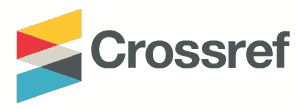Global Warming Potential from the Life Cycle of Fischer-Tropsch Fuel from Carbon Capture for Passenger Cars in Jakarta
DOI:
https://doi.org/10.62146/ijecbe.v2i1.36Keywords:
energy, life cycle assessment, carbon capture, alternative fuelAbstract
Measures to mitigate the impacts of climate change in the form of carbon capture and storage have not been implemented in Indonesia, especially because there are carbon transportation and storage processes that do not provide added value. The Fischer-Tropsch process is a technology that can produce products that can be processed from CO2 and processed to become value-added commodities in the form of motor vehicle fuel. Using the openLCA application, a life cycle analysis was carried out of the synthesis of FT fuel for use in conventional gasoline vehicles in Jakarta from the capture of CO2 sourced from a coal fired power plant’s exhaust gas, which was compared with the life cycle of electrical energy for battery electric vehicles and conventional fuel for internal combustion engine vehicles. The life cycle impact method used is global warming potential which is expressed in kg CO2-eq. An alternative scenario is created as a comparison for analysis regarding life cycle impacts and parameter sensitivity. It is gathered that FT Fuel synthesis from carbon capture has a higher GWP impact than electrical energy for BEVs and conventional gasoline for ICEVs, due to the high electrical energy requirements from FT Fuel synthesis and the energy mix of the Java-Bali electric power system which is still dominated by fossil-fueled power plants. With alternative scenarios, the GWP impact from FT Fuel synthesis could be equivalent to or lower than electrical energy for BEVs and conventional gasoline for ICEVs.
References
Dennis L Hartmann et al. “Observations: atmosphere and surface”. In: Climate change 2013 the
physical science basis: Working group I contribution to the fifth assessment report of the intergovernmental
panel on climate change. Cambridge University Press, 2013, pp. 159–254.
IPCC Climate Change et al. “Mitigation of climate change”. In: Contribution of working group III to
the fifth assessment report of the intergovernmental panel on climate change 1454 (2014), p. 147.
Atul K Jain et al. “Global carbon budget 2022”. In: Earth System Science Data 14.11 (2022), pp. 4811–
Ministry of Environment and Forestry. Directorate General of Climate Change Control. Laporan
Inventarisasi Gas Rumah Kaca (GRK) dan Monitoring, Pelaporan, dan Verifikasi (MPV) 2020. Tech. rep.
Ministry of Energy and Mineral Resources Data and Information Technology Center. Inventarisasi
Emisi GRK Bidang Energi. Tech. rep. 2020.
Josep G Canadell et al. “Intergovernmental Panel on Climate Change (IPCC). Global carbon and
other biogeochemical cycles and feedbacks”. In: Climate change 2021: The physical science basis.
Contribution of working group I to the sixth assessment report of the intergovernmental panel on climate
change. Cambridge University Press, 2023, pp. 673–816.
Intergovernmental Panel on Climate Change. Climate Change 2022: Mitigation of Climate Change.
Contribution of Working Group III to the Sixth Assessment Report of the Intergovernmental Panel on Climate
Change. Tech. rep. 2022.
United Nations Framework Convention on Climate Change (UNFCCC). Ideas and Proposals on the
Elements Contained in Paragraph 1 of the Bali Action Plan. Tech. rep. 2009.
Ministry of Environment and Forestry. Enhanced Nationally Determined Contribution Republic of
Indonesia. Tech. rep. 2022.
Dennis L Hartmann et al. “Observations: atmosphere and surface”. In: Climate change 2013 the
physical science basis: Working group I contribution to the fifth assessment report of the intergovernmental
panel on climate change. Cambridge University Press, 2013, pp. 159–254.
IPCC Climate Change et al. “Mitigation of climate change”. In: Contribution of working group III to
the fifth assessment report of the intergovernmental panel on climate change 1454 (2014), p. 147.
Atul K Jain et al. “Global carbon budget 2022”. In: Earth System Science Data 14.11 (2022), pp. 4811–
Ministry of Environment and Forestry. Directorate General of Climate Change Control. Laporan
Inventarisasi Gas Rumah Kaca (GRK) dan Monitoring, Pelaporan, dan Verifikasi (MPV) 2020. Tech. rep.
Ministry of Energy and Mineral Resources Data and Information Technology Center. Inventarisasi
Emisi GRK Bidang Energi. Tech. rep. 2020.
Josep G Canadell et al. “Intergovernmental Panel on Climate Change (IPCC). Global carbon and
other biogeochemical cycles and feedbacks”. In: Climate change 2021: The physical science basis.
Contribution of working group I to the sixth assessment report of the intergovernmental panel on climate
change. Cambridge University Press, 2023, pp. 673–816.
Intergovernmental Panel on Climate Change. Climate Change 2022: Mitigation of Climate Change.
Contribution of Working Group III to the Sixth Assessment Report of the Intergovernmental Panel on Climate
Change. Tech. rep. 2022.
United Nations Framework Convention on Climate Change (UNFCCC). Ideas and Proposals on the
Elements Contained in Paragraph 1 of the Bali Action Plan. Tech. rep. 2009.
Ministry of Environment and Forestry. Enhanced Nationally Determined Contribution Republic of
Indonesia. Tech. rep. 2022.
Mexico City Milan New Delhi San and Singapore Sydney Toronto. “SYNTHETIC FUELS
HANDBOOK”. In: ().
Sasol Limited. Sasol Limited Business Overview. Tech. rep. 2021.
Peter Styring, Elsje Alessandra Quadrelli, and Katy Armstrong. Carbon dioxide utilisation: closing the
carbon cycle. Elsevier, 2014.
Daniel H König et al. “Simulation and evaluation of a process concept for the generation of synthetic
fuel from CO2 and H2”. In: Energy 91 (2015), pp. 833–841.
Ioanna Dimitriou et al. “Carbon dioxide utilisation for production of transport fuels: process and
economic analysis”. In: Energy & Environmental Science 8.6 (2015), pp. 1775–1789.
Guiyan Zang et al. “Performance and cost analysis of liquid fuel production from H2 and CO2
based on the Fischer-Tropsch process”. In: Journal of CO2 Utilization 46 (2021), p. 101459.
Ebrahim Rezaei and Stephen Dzuryk. “Techno-economic comparison of reverse water gas shift reac-
tion to steam and dry methane reforming reactions for syngas production”. In: Chemical engineering
research and design 144 (2019), pp. 354–369.
Omar YH Elsernagawy et al. “Thermo-economic analysis of reverse water-gas shift process with
different temperatures for green methanol production as a hydrogen carrier”. In: Journal of CO2
Utilization 41 (2020), p. 101280.
Nicholas Stern. “Stern Review: The economics of climate change”. In: (2006).
Ian Skinner et al. Towards the decarbonisation of the EU’s transport sector by 2050. European Commission
Brussels, Belgium, 2010.
Konstantinos Atsonios, Jun Li, and Vassilis J Inglezakis. “Process analysis and comparative assessment
of advanced thermochemical pathways for e-kerosene production”. In: Energy 278 (2023), p. 127868.
Maria Fernanda Rojas-Michaga et al. “Sustainable aviation fuel (SAF) production through power-
to-liquid (PtL): A combined techno-economic and life cycle assessment”. In: Energy Conversion and
Management 292 (2023), p. 117427.
Coen Van Der Giesen, René Kleijn, and Gert Jan Kramer. “Energy and climate impacts of producing
synthetic hydrocarbon fuels from CO2”. In: Environmental science & technology 48.12 (2014), pp. 7111–
Marco Marchese et al. “CO2 from direct air capture as carbon feedstock for Fischer-Tropsch
chemicals and fuels: Energy and economic analysis”. In: Journal of CO2 Utilization 46 (2021),
p. 101487.
Craig Dun, Gareth Horton, and Sujith Kollamthodi. “Improvements to the definition of lifetime
mileage of light duty vehicles”. In: Ricardo-AEA: London, UK (2015).
Environmental Management - Life Cycle Assessment - Principles and Framework. International Organi-
zation for Standardization (ISO), 2006.
Environmental Management - Life Cycle Assessment - Requirements and Guidelines. International
Organization for Standardization (ISO), 2006.
Mark AJ Huijbregts et al. “ReCiPe2016: a harmonised life cycle impact assessment method at
midpoint and endpoint level”. In: The International Journal of Life Cycle Assessment 22 (2017), pp. 138–
IPCC Climate Change. “The physical science basis”. In: (No Title) (2013).
Fortunat Joos et al. “Carbon dioxide and climate impulse response functions for the computation of
greenhouse gas metrics: a multi-model analysis”. In: Atmospheric Chemistry and Physics 13.5 (2013),
pp. 2793–2825.
openLCA. openLCA Download. URL: https://www.openlca.org/download/ (visited on 12/25/2023).
Swiss Centre for Life Cycle Inventories. Ecoinvent Database 3.9.1. 2022. URL: https://ecoinvent.org/the-
ecoinvent-database/data-releases/ecoinvent-3-9-1/ (visited on 12/25/2023).
Commission VII of House of Representatives of Republic of Indonesia. Laporan Kunjungan Kerja
Reses Komisi VII DPR RI ke PLTU Suralaya PT Indonesia Power dan PT Krakatau Steel. Tech. rep.
PT Bukit Asam Tbk. Laporan Tahunan PT Bukit Asam Tbk 2022. 2023. URL: https://www.ptba.co.id/.
Kasri Patakom et al. “Kajian pola operasi dan desain penataan emplasemen stasiun pada jalur longcut
Tegineneng-Tarahan”. In: (2019).
Sri Gunani Partiwi, IK Gunarta, and Mohammad Hidayatullah. “Evaluasi Kinerja Sistem Distribusi
Perusahaan Batubara dengan Adanya Penambahan Coal Terminal”. In: Jurnal Teknik Industri 10.2
(2009), pp. 98–108.
PT Bukit Asam Tbk. PTBA Resmikan Dermaga Batubara Dengan Kapasitas Sandar 210.000 DWT. URL:
https://www.ptba.co.id/berita/ptba-inaugurated-210000-dwt-jetty-116 (visited on 12/28/2023).
Google. Google Maps. URL: https://www.google.com/maps (visited on 12/26/2023).
Rizki Firmansyah Setya Budi and Suparman Suparman. “Perhitungan faktor emisi CO2 PLTU
batubara dan PLTN”. In: Jurnal Pengembangan Energi Nuklir 15.1 (2013).
National Energy Technology Laboratory. Cost and Performance baseline for Fossil Energy Plants Volume
: Bituminous Coal and Natural Gas to Electricity. Tech. rep. 2019.
Ichda Maulidya. “Kesiapan Angkutan Jalan Dalam Menghadapi Penerapan Standar Emisi Euro 4”.
In: Warta Penelitian Perhubungan 31.1 (2019), pp. 1–14.
Google. Distance from PLTU Suralaya to Jakarta. URL: https://maps.app.goo.gl/aHzCJG1bvWt6Zipw8
(visited on 12/26/2023).
National Energy Technology Laboratory. Overview of Coal-to-Liquids: A Historical Perspective. Tech.
rep. 2020.
European Commission, Joint Research Centre, and Institute for Environment and Sustainability.
International Reference Life Cycle Data System (ILCD) Handbook - General guide for Life Cycle Assessment
- Detailed guidance. Tech. rep. 2010.
International Energy Agency. IEAGHG Technical Report 2021-03. CO2 Utilisation: Hydrogenation
Pathways. Tech. rep. 2021. URL: https://www.ieaghg.org.
Downloads
Published
How to Cite
Issue
Section
License
Copyright (c) 2024 International Journal of Electrical, Computer, and Biomedical Engineering

This work is licensed under a Creative Commons Attribution 4.0 International License.






